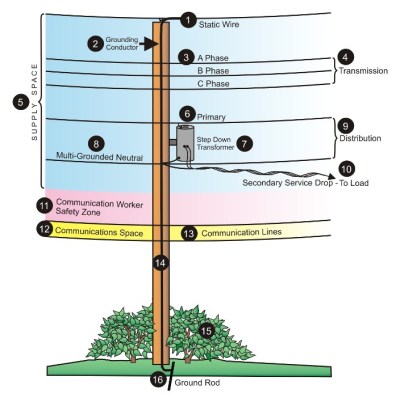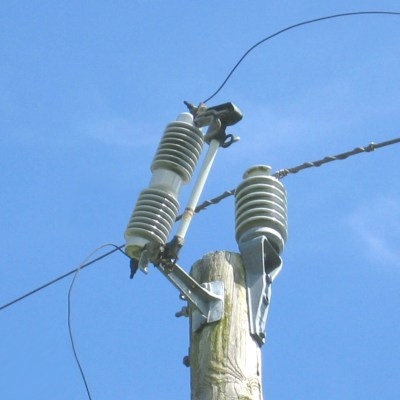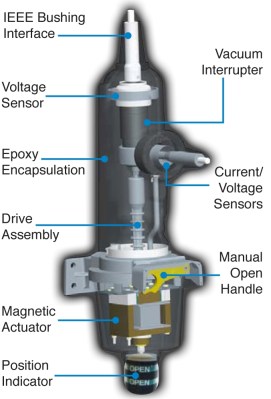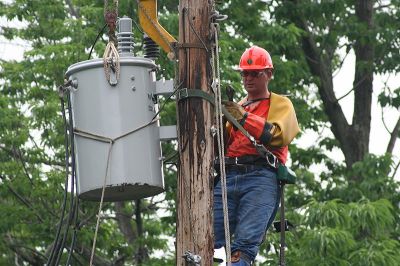

A Field Guide To The North American Utility Pole
source link: https://hackaday.com/2016/02/22/a-field-guide-to-the-north-american-utility-pole/
Go to the source link to view the article. You can view the picture content, updated content and better typesetting reading experience. If the link is broken, please click the button below to view the snapshot at that time.
A Field Guide To The North American Utility Pole
We live under the umbrella of an intricate and fascinating web of infrastructure that enables every aspect of modern technology. But how often do we really look at it? I’ve been intrigued by utility poles for years, and I’ve picked up a thing or two that I’d like to share. Bear in mind these are just my observations from the ground in my area; I’m sure utility professionals will have better information, and regional practices will no doubt lead to very different equipment arrangements. But here’s a little of what I’ve picked up over my years as a pole geek.
Space Management
 Spaces on a typical joint pole. Source: Florida Public Service Commission
Spaces on a typical joint pole. Source: Florida Public Service CommissionVery few utility poles are used for just one utility. Poles that house multiple services, like power, telephone, and cable, are called joint poles and are covered by strict safety rules that separate the utilities spatially. In general, the most dangerous things on a utility pole are at the top. That makes sense – get the scary stuff as far away from the humans as possible. This is known as the supply space, and it’s where you’ll find both the primary lines, which distribute high voltage, and the secondary circuits, which have been stepped down by distribution transformers. If there are streetlights or traffic signals attached to a pole, this is where they’ll live.
The space closest to the ground is reserved for the low-voltage utilities and is called the communications space. Telephone is usually the lowest on the pole, with cable TV right above it. Telephone lines are generally thick cables and usually have junction boxes on one or both sides of the pole. Cable lines are generally thinner, usually silver or light-colored, and have distinctive D-shaped expansion loops next to each pole. They often have inline equipment like amplifiers; those are easy to spot by the obvious heatsinks on the enclosures. It’s worth noting that sometimes cable lines are at the bottom of the communications space rather than telephone, at least in my area.
In some cities there are still dedicated wires for fire and police signaling, like fire pull boxes and police patrolman’s call boxes. Businesses used to have dedicated lines for burglar alarms that went right to the local precinct house, but those days are gone and their space on joint poles has largely been reclaimed. You might find optical fiber cables in the communications space as well, if your local providers are using fiber as a backbone, or if you’re lucky enough to live where fiber directly connects to customers.
Between the supply space and the communication space is the neutral space or safety zone space. It’s an area reserved for telco and cable workers to safely perform maintenance and make connections to their service. In the US it’s a minimum of 40″ at the pole – that’s not much, so the communications workers still need to be careful up there.
There’s one more really important circuit on every pole – the ground circuit. Tied into the supply neutral and extending from the bottom of the supply space to a rod driven into the ground next to the pole, the ground circuit provides a potentially lifesaving path to the earth for any stray current.
High Tension
Up in the supply space is where things get interesting. That’s where the primary and secondary wiring lives, along with all the safety and distribution equipment. Near the top of a typical pole you’ll often see one or more crossarms, which are stout wooden timbers bolted to the pole and braced diagonally. These act as spreaders to keep the wires of the primary circuits separated. Power is distributed from substations at anywhere from 7,200 volts to 34,500 volts. You can get a general idea of how high the voltage is by looking at the insulators used – the longer the insulator, the higher the voltage.
 Pole-mounted fuse cutout
Pole-mounted fuse cutoutThe crossarm will have anywhere from two to four wires on it, depending on how many phases are being distributed. Power companies generate electricity in three phases 120° apart, which gives them many options for connecting secondary and distribution equipment. Three-phase distribution requires four wires, one for each phase and a neutral. If you see three wires on a crossarm and one wire on the pole in the supply space, you’ll know you’re looking at a three-phase circuit. Poles in some rural areas like mine don’t have crossarms and only have a single conductor on an insulator at the very top of the pole along with the neutral. In this case a single phase is being distributed.
The supply space is also where power companies put their safety gear. To protect against short circuits, cutout fuses are often installed between distribution lines and secondary equipment, like transformers. Cutouts are easy to spot – they’re wide insulators with a light-colored tube running between contacts. The tube contains a fuse with an explosive charge that kicks the cutout open quickly and dramatically. The dangling fuse body can be removed and replaced with a hot stick, although sometimes there’s still a line fault when the cutout is reconnected:
 Recloser. Source – G&W Electric
Recloser. Source – G&W ElectricSome circuits have reclosers instead of cutouts. Reclosers are basically automatically resetting circuit breakers that look a little like small transformers. They’re used in circuits that see a lot of nuisance trips due to foliage or animal activity, opening when a fault is detected and reclosing after a time delay, on the assumption that the short-circuit has cleared. They’ll try to reconnect several times before giving up.
 Lineman replacing a lightning-damaged transformer.
Lineman replacing a lightning-damaged transformer.Secondary equipment in the supply space is dominated by transformers. Usually in the form of a large gray barrel, transformers step the primary voltage down to secondary voltages suitable for end customers. Residential customers in North America generally get a 240/120 volt service, with two 120 volt circuits relative to neutral. Service drops from the transformer to residences (one transformer usually services multiple customers) is often in the form of triplex cable, with two insulated conductors wrapped around a bare center conductor. The bare wire serves as both neutral conductor and physically supports the two 120 volt conductors. Commercial customers often benefit from three-phase service, in which case you might see three transformers mounted on a pole, one for each phase.
People Power
There’s another very important part of the power system that you’ll occasionally see on a pole – the lineworkers. As I write this, a bizarre winter storm is raging outside. It was 10 below zero yesterday with snow, and now it’s 50 degrees with heavy rain and wind. It’s weather that’s tailor made for tearing apart infrastructure, and I know there’s a good chance that a tree limb will come down somewhere and tear down wires. When it happens, lineworkers need to get out there and fix it. If you want a taste for what it takes to be a lineworker, check out this series of videos from the Southeast Lineman Training Center. It’s both physically and mentally demanding work, and the fact that these men and women will be out cleaning up the mess created by this storm tonight is comforting.
And let’s not forget the guys even further behind the scenes – the circuit managers. We had a cutout near our house that was regularly blowing and knocking us offline. I complained to the utility company, and to my complete surprise I got a call from a very nice gentleman who was very upset that one of his circuits was causing trouble. He promised action, and within a few days a tree crew was out removing hazards from the area. We haven’t had a problem since then, and I was really impressed by the level of craftsmanship exhibited by this guy. He took it seriously – personally, even. I really didn’t expect that from what I’d always assumed was a faceless corporate monopoly.
The point is, real people built the grid, and real people keep it alive for the benefit of everyone. So every once in a while, it’s not a bad idea to spend a little time looking up and admiring the handiwork that we so often take for granted.
Recommend
About Joyk
Aggregate valuable and interesting links.
Joyk means Joy of geeK